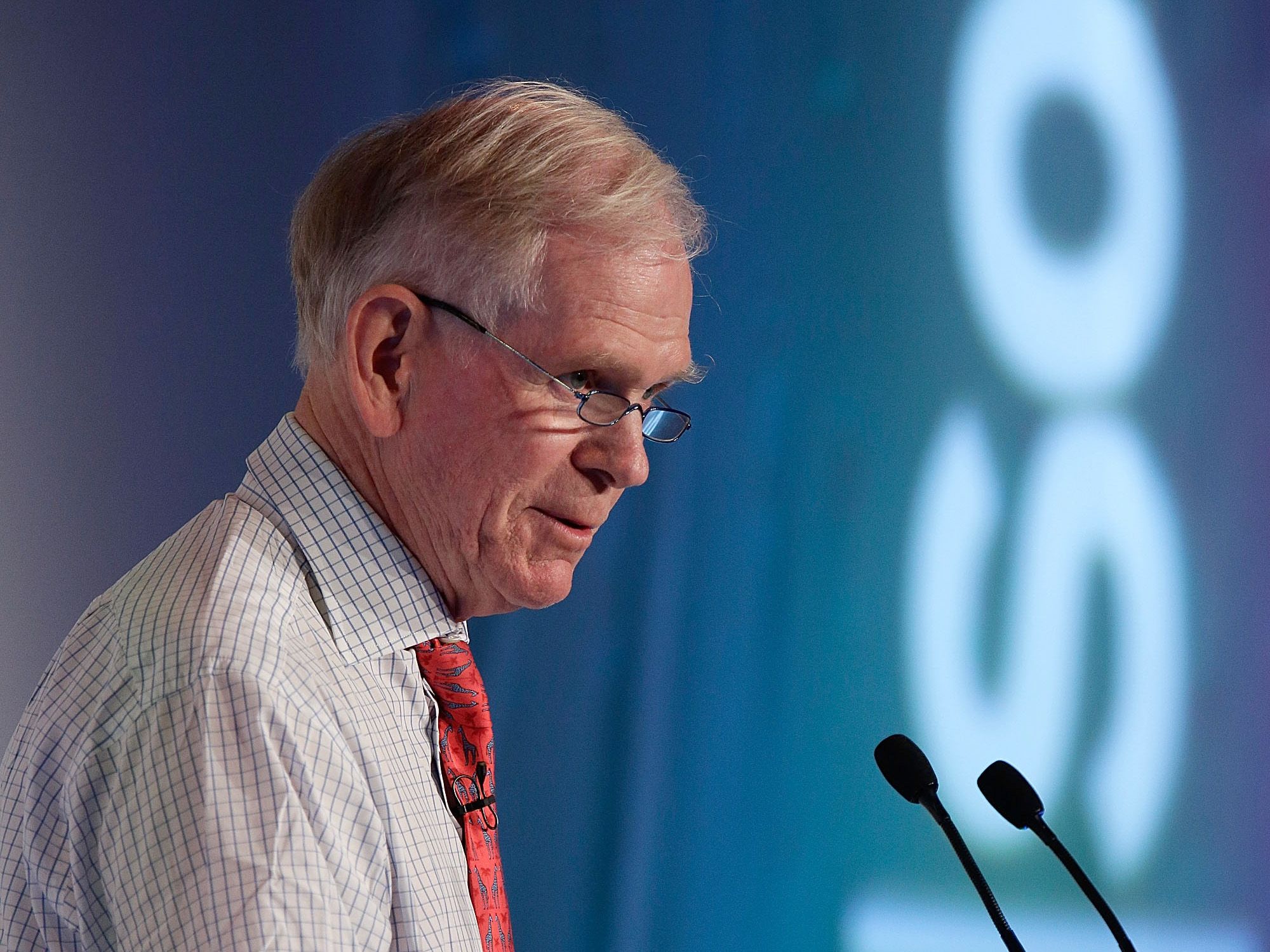Legendary money manager Jeremy Grantham believes the bear market rally that started in late June is signaling the final stage of a so-cailled “super bubble.” If the GMO founder is correct, the ending won’t be pretty.
“Only a few market events in an investor’s career really matter, and among the most important of all are super bubbles,” Grantham wrote yesterday in a letter to clients. “These super bubbles are events unlike any others: While there are only a few in history for investors to study, they have clear features in common.”

Jeremy Grantham (Bloomberg).
Grantham describes ordinary bubbles “2 sigma deviations from trend” and they typically account for 85% of all bubbles. Consequently, they can be painful but are fairly frequently and rarely cause long-term damage. In contrast, “superbubbles reach 2.5 sigma or greater,” and some like the one that ushered in the Great Depression scarred a generation.
In his view, there have only been three “true U.S. superbubbles.” They occurred in 1929, 2000 and 2021.
Grantham awards “honorary” membership to the 1972 "Nifty Fifty" bubble. Although it was “only” in 2 sigma event when measured by standard deviation, stocks subsequently tumbled 62%, the worst drop since 1929.
Grantham was a young money manager in 1972 and the collapse of the Nifty Fifty stocks clearly left an indelible impression on him. “In some ways, it lacked the crazy speculation of the others but caused, for the only time ever, the highest quality segment [that dominates the S&P 500] to go to a 50% premium versus the rest of the market and to be called “one-decision stocks,” Grantham writes, “because once bought they would be held forever, because they were so good—a belief system bought into by the entire banking establishment that still managed all the money back then.”
In the current 21st century global economy, Grantham sees shortages of labor, commodities and raw materials coming to the fore in the face of inflated stock price multiples. If corporate profit margins start shrinking from record levels while equity price-to-earnings multiples compress, the twin forces could exert a powerful depressing influence on stocks and global wealth.
If Grantham is right, what investors may have seen playing out between early July and last Friday’s Federal Reserve meeting at Jackson Hole was a classic suckers’ rally. “One of those features is the bear market rally after the initial derating stage of the decline but before the economy has clearly begun to deteriorate, as it always has when superbubbles burst,” he writes. “This in all three previous cases recovered over half the market’s initial losses, luring unwary investors back just in time for the market to turn down again, only more viciously, and the economy to weaken. This summer’s rally has so far perfectly fit the pattern.”
Grantham divides the current predicament of the economy and markets into two different threats—the near-term problems and the more intractable longer-term ones. The immediate issues center on inflation and supply-chain issues.
“The food/energy/fertilizer problems, exacerbated by the war in Ukraine, are even worse in the emerging world (especially Africa) than the European energy problems we have heard about,” he writes. “Russia and Belarus account for 40% of global exports of potash, a key fertilizer, driving wheat/corn/soybean prices to records earlier this year. Increased food and energy prices are causing acute trade imbalances and civil disorder in the most vulnerable countries, as seen for example in the extremely rapid virtual collapse of the Sri Lankan economy. The energy shock is now all but guaranteed to tip Europe into recession; while the U.S. market has a long history of ignoring foreign problems and interactions, global growth is assuredly coming down.”








